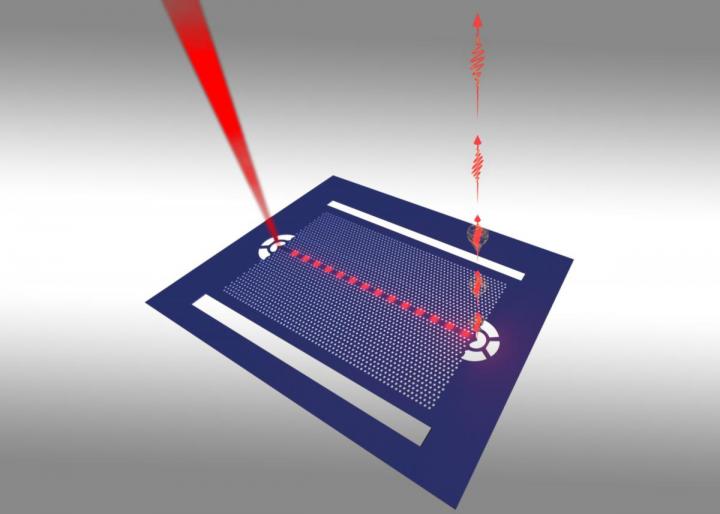
Credit: Chul Soo Kim, US Naval Research Laboratory
WASHINGTON — Researchers at the U.S. Naval Research Laboratory (NRL) developed a new technique that could enable future advancements in quantum technology.
The technique squeezes quantum dots, tiny particles made of thousands of atoms, to emit single photons (individual particles of light) with precisely the same color and with positions that can be less than a millionth of a meter apart.
“This breakthrough could accelerate the development of quantum information technologies and brain-inspired computing,” said Allan Bracker, a chemist at NRL and one of the researchers on the project.
In order for quantum dots to “communicate” (interact), they have to emit light at the same wavelength. The size of a quantum dot determines this emission wavelength. However, just as no two snowflakes are alike, no two quantum dots have exactly the same size and shape — at least when they’re initially created.
This natural variability makes it impossible for researchers to create quantum dots that emit light at precisely the same wavelength [color], said NRL physicist Joel Grim, the lead researcher on the project.
“Instead of making quantum dots perfectly identical to begin with, we change their wavelength afterwards by shrink-wrapping them with laser-crystallized hafnium oxide,” Grim said. “The shrink wrap squeezes the quantum dots, which shifts their wavelength in a very controllable way.”
While other scientists have demonstrated “tuning” of quantum dot wavelengths in the past, this is the first time researchers have achieved it precisely in both wavelength and position.
“This means that we can do it not just for two or three, but for many quantum dots in an integrated circuit, which could be used for optical, rather than electrical computing,” Bracker said.
The wide breadth of researcher expertise and science assets at NRL allowed the team to test various approaches to making this quantum dot breakthrough in a relatively short amount of time.
“NRL has in-house facilities for crystal growth, device fabrication, and quantum optical measurements,” Grim said. “This means that we could immediately coordinate our efforts to focus on rapidly improving the material properties.”
According to Grim and Bracker, this milestone in the manipulation of quantum dots could lay the groundwork for future strides in a number of areas.
“NRL’s new method for tuning the wavelength of quantum dots could enable new technologies that use the strange properties of quantum physics for computing, communication and sensing,” Bracker said. “It may also lead to ‘neuromorphic’ or brain-inspired computing based on a network of tiny lasers.”
Applications in which space and power-efficiency are limiting factors may also benefit from this breakthrough approach, researchers said.
###
This research was published in the journal Nature Materials, “Scalable in operando strain tuning in nanophotonic waveguides enabling three-quantum-dot superradiance.”
Media Contact
Mary Estacion
[email protected]
Original Source
https:/
Related Journal Article
http://dx.



